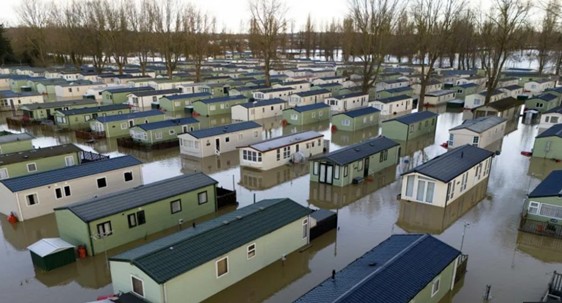
The agency's first detailed assessment of climate change and flood risks highlights the growing threat to homes, businesses, and infrastructure, with current estimates showing 6.3 million properties already at risk. This figure is higher than previously thought, partly due to advances in flood mapping and computer modeling.
Escalating Flood Risks
Flood risks in England stem primarily from rivers, the sea, and surface water caused by heavy rainfall overwhelming drainage systems. Properties are classified as "at risk" if they face at least a one-in-1,000 chance of flooding annually.
The EA's latest data shows 4.6 million properties are vulnerable to surface flooding, with London being the most affected region. Climate change could push this number to 6.1 million by 2050. Additionally, the number of properties at risk from river and coastal flooding could rise from 2.4 million to 3.1 million over the same period.
Drivers of Increased Flood Risk
- Heavier Rainfall: Warming global temperatures intensify rainfall. Between October 2023 and March 2024, for instance, stormiest-day rainfall in the UK increased by an estimated 20% due to climate change.
- Rising Sea Levels: Global sea levels have risen nearly 20cm since 1900, with most of the increase occurring since 1990. This trend is driven by melting ice sheets and the thermal expansion of warming seawater.
- Coastal Erosion: England's coastlines are among the fastest eroding in Europe, a trend expected to worsen. The number of properties at risk of being lost to the sea could rise to nearly 20,000 by 2100, up from 3,500 by mid-century.
Regions such as the East Midlands, Yorkshire and The Humber, and southeast England face the highest vulnerability, with coastal and river flooding likely to produce deeper, more damaging floodwaters.
Preparing for the Future
While the EA report focuses on climate-driven risks, other factors like construction on floodplains and the state of flood defenses will shape future impacts.
The UK has already been criticized for insufficient preparedness for climate-related floods. Earlier this year, MPs highlighted a lack of funding and maintenance for existing flood defenses, as well as insufficient investment in new infrastructure.
In response to the report, Floods Minister Emma Hardy emphasized the government's commitment to tackling the issue, announcing a £2.4 billion investment over the next two years to strengthen flood defenses.
The Role of Flood Defenses
London, for example, benefits significantly from the Thames Barrier, which reduces the risk of river and coastal flooding in the city. However, other regions remain more exposed, underscoring the need for expanded and well-maintained defenses nationwide.
As Julie Foley, the EA's director of flood risk strategy, cautioned: "The frequency and severity of the kind of flood events we've been experiencing are likely to become more and more challenging."
A Call for Proactive Measures
The findings serve as a stark reminder of the urgency of addressing flood risks in the face of climate change. Enhanced defenses, smarter urban planning, and sustainable water management will be critical to mitigating the growing threats to communities across England.